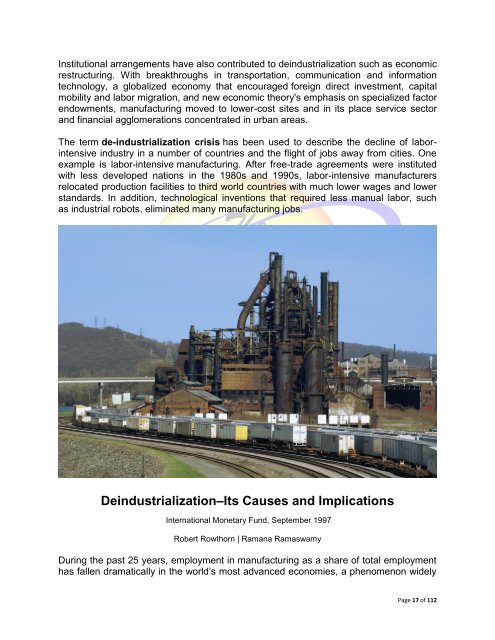De-Industrialization
De-Industrialization
De-Industrialization
You also want an ePaper? Increase the reach of your titles
YUMPU automatically turns print PDFs into web optimized ePapers that Google loves.
Institutional arrangements have also contributed to deindustrialization such as economic<br />
restructuring. With breakthroughs in transportation, communication and information<br />
technology, a globalized economy that encouraged foreign direct investment, capital<br />
mobility and labor migration, and new economic theory's emphasis on specialized factor<br />
endowments, manufacturing moved to lower-cost sites and in its place service sector<br />
and financial agglomerations concentrated in urban areas.<br />
The term de-industrialization crisis has been used to describe the decline of laborintensive<br />
industry in a number of countries and the flight of jobs away from cities. One<br />
example is labor-intensive manufacturing. After free-trade agreements were instituted<br />
with less developed nations in the 1980s and 1990s, labor-intensive manufacturers<br />
relocated production facilities to third world countries with much lower wages and lower<br />
standards. In addition, technological inventions that required less manual labor, such<br />
as industrial robots, eliminated many manufacturing jobs.<br />
<strong>De</strong>industrialization–Its Causes and Implications<br />
International Monetary Fund, September 1997<br />
Robert Rowthorn | Ramana Ramaswamy<br />
During the past 25 years, employment in manufacturing as a share of total employment<br />
has fallen dramatically in the world’s most advanced economies, a phenomenon widely<br />
Page 17 of 112

















